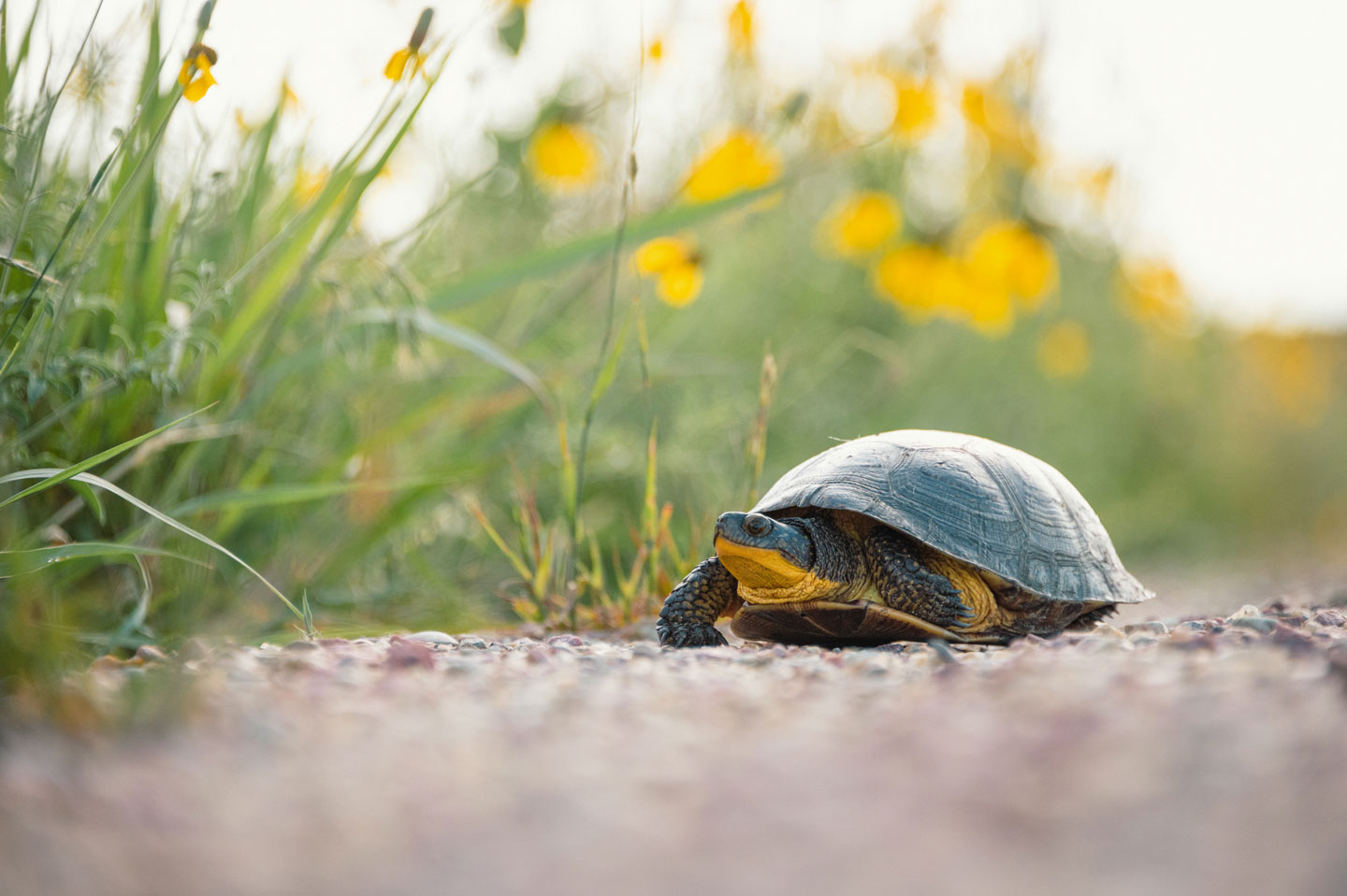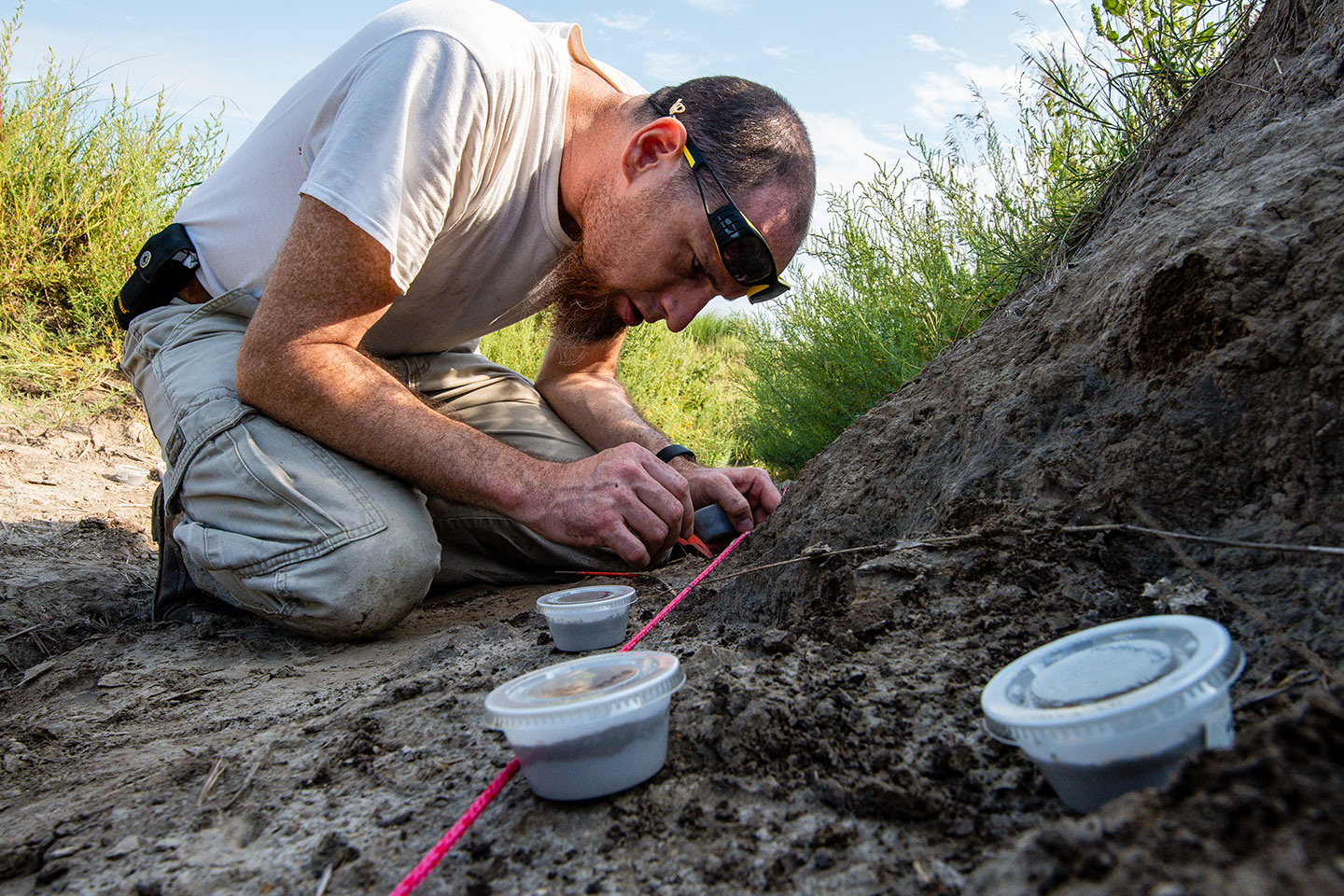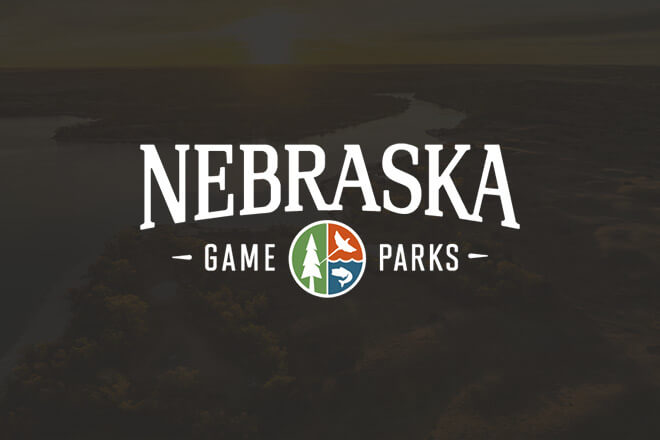American ginseng
Status: Threatened
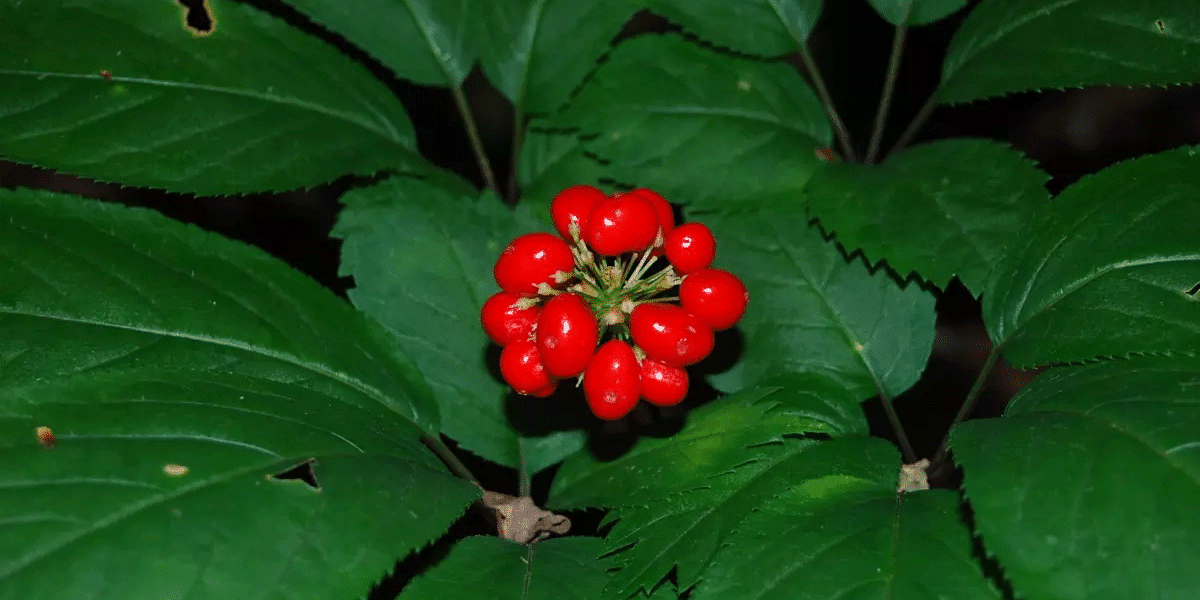
A relatively small plant, American Ginseng (Panax quinquefolius) reaches heights of 6”-18.” It has three to four leaves with each leaf containing five leaflets. Leaflets are toothed and oval in shape coming to a district point.
Stems are green with a hint of red at base of the leaflet stems. Flowers are small, greenish-white and rather inconspicuous. Fruit is a striking cluster of bright red berries.
Range
American Ginseng is native to the eastern United States and Canada. It is found as far west as North Dakota down to Texas. It is most common in the Appalachian and Ozark regions.
Although not native to the area, it is cultivated in China for medicinal purposes.
In Nebraska, it is found in the deciduous forests along the Missouri River on the state’s eastern border.
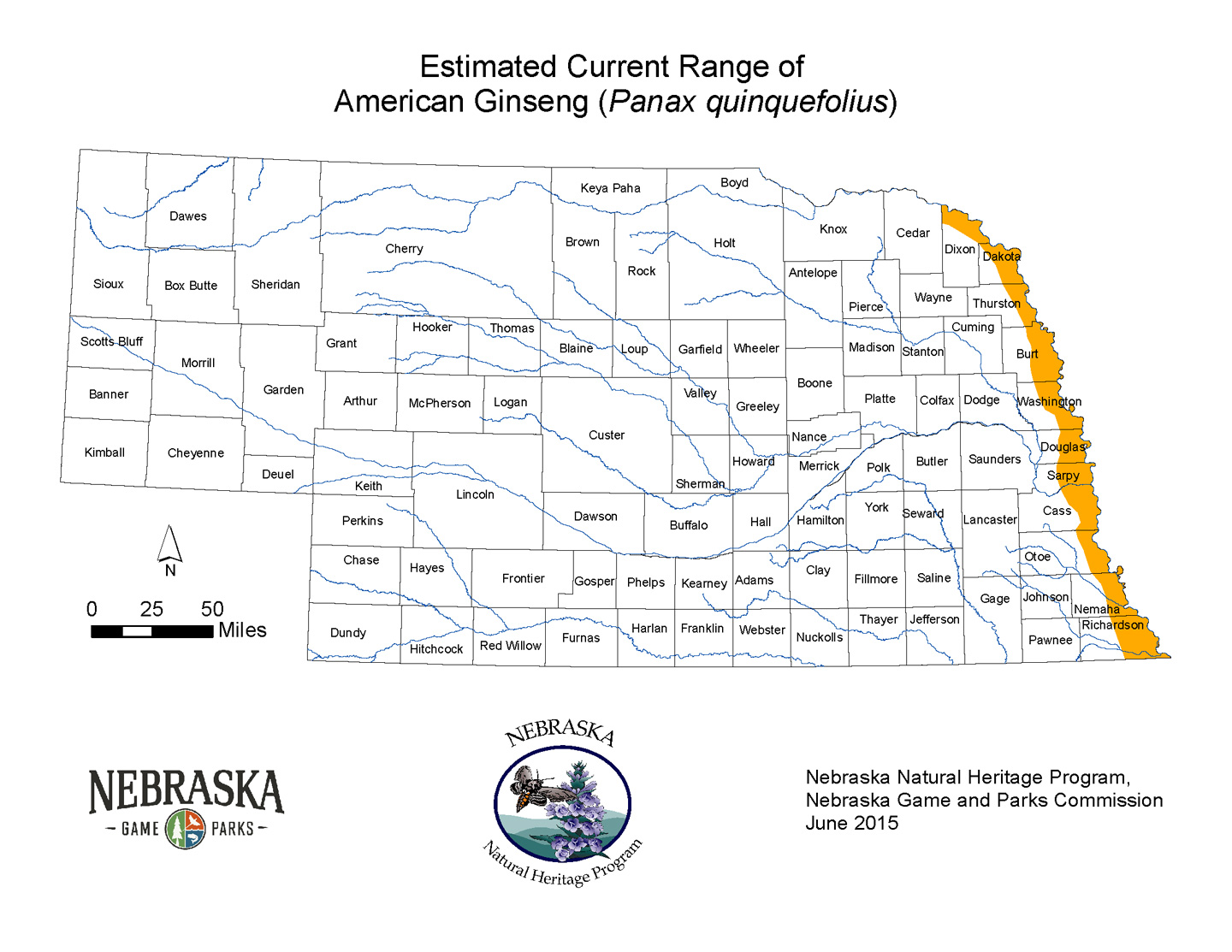
Habitat
American Ginseng is found in the understory of eastern deciduous forest with rich soils. It prefers moist, but not wet soils. It is most often found on hillsides and even in wooded ravines. Woodlands must be dense and provide adequate shade for Ginseng to be present.
If a wooded area contains bloodroot, black cohosh, maidenhair fern or yellow lady’s slipper, it is considered to also be good habitat for American Ginseng.
Reproduction
American Ginseng reproduces only through propagation, dispersal and germination of seeds. It blooms from May through July. Flowers consist of a cluster of small flowers; flowers on the outside of the cluster bloom first with those on the inside blooming later. Flowers can be self-pollinated or pollinated via a pollinator. The two known pollinators of American Ginseng are syrphid flies and halictid bees.
Fruits are present from July through August and consist of a striking cluster of bright red berries. Each seed contains one-two seeds (occasionally three). Not much is known about dispersal of American Ginseng seeds although it is believed they are distributed via gravity and birds with one study naming the American Wood Thrush as a likely seed disperser.
Population status
Although American Ginseng occurs over a relatively large range and there are likely millions or even billions of individual plants in the wild, the total population has declined dramatically since European settlers first began settling in the eastern United States. Commercial harvest of ginseng root began in the mid-1700’s. Originally used by Native Americans for medicinal purposes, today it is primarily used in China and Hong Kong.
Commercial harvest of the plants continue today as their root is considered by some to be of great medicinal value. It is especially coveted in China where one pound of root can bring several hundred dollars. The total value of commercial harvest of wild ginseng in the United States is estimated at $27 million per year with most being shipped to China and Hong Kong.
American Ginseng is not listed on the federal Threatened and Endangered Species List, but it is still regulated through other laws including the Convention on International Trade in Endangered Species of Wild Fauna and Flora (CITES) which bans the international trade of American Ginseng in whole plant (live or dead) form, and whole or parts of the root.
Harvest of wild American Ginseng is regulated by the U.S. Fish and Wildlife Service which has approved harvest in 19 states. Within 18 of these states, harvested plants must be at least 5 years old (have at least 3 leaves). In Illinois, plants must be at least 10 years old (have at least 4 leaves). Additionally, all 19 states have harvest seasons which start in September.
In Nebraska, American Ginseng is listed as Threatened. Harvest of wild plants is not allowed at any age.
Management and outlook
The largest threat to wild American Ginseng is harvest for medicinal trade. Although much work has been done to stop the illegal harvest of wild ginseng, it continues today. Additional threats include habitat destruction (logging and destruction of deciduous hardwood forests) and habitat fragmentation.
Other lesser threats include browsing of foliage by forest animals, mainly White-tailed Deer, and feeding on seeds by many forest animals including deer, raccoons, birds and rodents. Invasive species – especially garlic mustard – have shown to have some effect on wild ginseng populations.
Although little can be done to prevent wild animals from eating American Ginseng, much can be done to prevent the overharvest of the plant and habitat loss or fragmentation. For state where harvest is permitted, state must report the previous year’s total harvest to the U.S. Fish and Wildlife Service which then determines if harvest can continue based on this data and ecological conditions and new research.
Illegal harvest is still a large problem for this species. Use of technology, especially GPS to record known locations of plants, has helped park rangers and law enforcement better track individual plants. Additionally, some sites are using a process of coloring or dying roots to prevent harvest and prosecute illegal harvesters.
Work is also needed to prevent destruction of dense hardwood forests in the eastern United States.
Conservation help
Individuals wanting to help conserve American Ginseng should follow rules and regulations regarding collection or harvest. Laws vary by state; harvest of wild ginseng is not allowed at all in Nebraska.
Additionally, individuals should report illegal harvest to law enforcement. In Nebraska, individuals can call the toll-free Nebraska Wildlife Crimestoppers hotline at 1-800-742-7627. Individuals can choose to remain anonymous.
Other ways to help include donating to conservation organizations dedicated to helping this and other Threatened or Endangered Species through research, land management and species conservation.
Finally, taking time to learn about Threatened and Endangered Species as well as sharing that knowledge with others is critical to the development of citizens who care for the future of Threatened and Endangered Species.
References
American Ginseng: Information for Dealers and Exporters.U.S. Fish & Wildlife Service International Affairs. July 2015.
American Ginseng. Environmental Conservation Online System (ECOS). U.S. Fish and Wildlife Service. Accessed online December 21, 2017.
NatureServe. 2013. NatureServe Explorer: An online encyclopedia of life [web application]. Version 7.1. NatureServe, Arlington, Virginia. Accessed online December 21, 2017.
The Fight Against Ginseng Poaching in the Great Smoky Mountains. David A. Taylor. Smithsonian Magazine. April 21, 2016.
Nebraska’s At-Risk Wildlife: Conserving Species and Their Habitats. Panella. Nebraska Natural Legacy Project. Pages 160-161.

